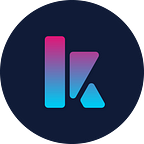QLC Chain adoption series in the ICT industry: Using QLC Chain Smart Contracts to Standardize the Automation of MEF Sonata API Billing Process for Global Operators
On August 26, the QLC Chain team co-lead with Daniel Bar-Lev, vice-president of Strategic Programs in MEF, the DLT incubation group meeting in MEF.
The objective of the group is to define in a new MEF standard on how DLT can merge with the existing Sonata-APIs in the telecom business lifecycle, ultimately opening new business opportunities as well as improving their settlement and billing processes dramatically.
The QLC Chain team presented the timing diagram of the interaction between service providers (buyers) and operators (sellers) in the DLT. The presentation showed it is compatible with existing LSO sonata used for the request of invoices through the DLT as well as synchronization of books of records between buyers and sellers for any service transaction.
The session was very participative. Telecom companies, among which we can highlight the presence of Sparkle, R3, Amartus, Centurylink, Cisco, PCCW Global, and Nec/Netcraker, were interested to know how to set smart contracts and the needed inputs for its use to automate billing between operators and service providers.
Alen Breznik from QLC Chain answered them with a demonstration of a portal where real products can be ordered. In particular port to port connections, how to set up the buyer parameters of the product, and eventually contract the service. The demonstration showed that smart contracts are automatically generated every time a service is contracted. The lifecycle of the smart contracts was described, including their status once the service is activated, and their conclusion upon automatic invoice generation.
Telecom participants commented on how this can solve their dispute processes since the smart contract can use rules accepted by both parties to define when services start and end. They also mentioned how this solution would also provide additional value on defining the reputation of the involved parties.
About QLC Chain
QLC Chain is to resolve the data trust and security problem in the communication industry, it provides network automation of billing/reconciliation/settlement/payment/custody to telecom operators utilising blockchain technology.
QLC Chain offers telecom operators with inter-carrier connection and financial consultancy services as well.
From the ledger structure perspective: QLC Chain supports each account to have its own chain of ledger integrated with telecom service capabilities, named the multi-dimensional block-lattice structured ledger.
From an adoption scenario perspective: QLC Chain’s mission is to create a secure and trusted environment for communication services and to narrow down the digital divide by leveraging Distributed Ledger Technology, enabling everyone to operate and benefit from network services.
QLC Chain solution suite includes:
- A blockchain-based DoD (Data on demand) platform to process inter-carrier settlements in a trustable, auditable and automated manner and enable frictionless on demand commerce and federated network for information and communications service providers
- A blockchain-based A2P SMS settlement platform with its product suite including an A2P SMS settlement solution; Anti-SMS swap solution, and QLC Chain soft-sim identity for IoT devices.
- A blockchain-based DID (Decentralized ID) communication authentication solution which is intended to authenticate, authorize, and access blockchain identities and security properties in network service such as SD-WAN/MPLS/cellular network/5G slicing network.
- A solution that enables enterprises and operators to use crypto wallet and stable coin payment for supply chain.
Learn more about QLC Chain https://qlcchain.org/
